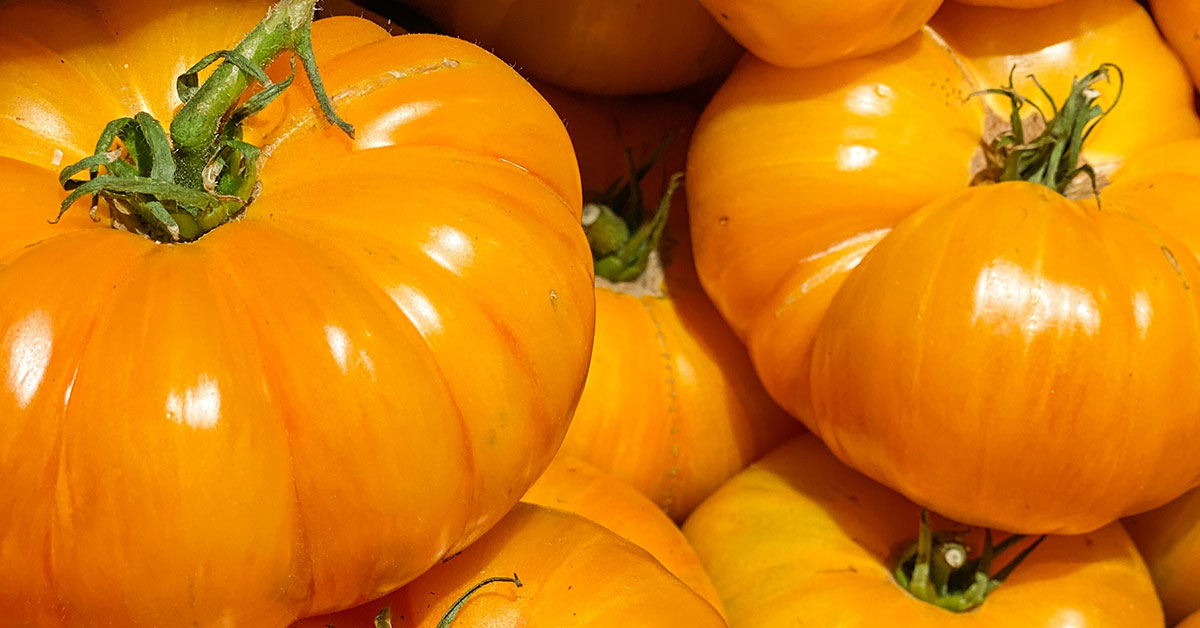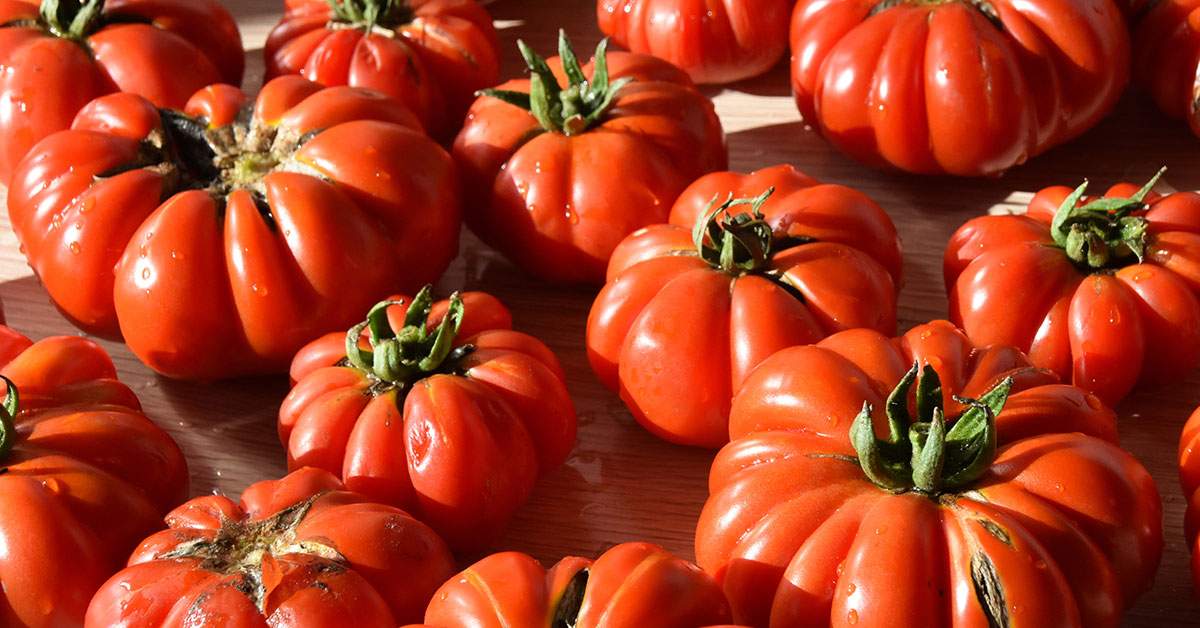The Yellow Brandywine tomato is a unique and flavorful variety of tomato that is loved by gardeners and foodies alike. With its large size, meaty texture, and sweet yet tangy taste, this tomato is a favorite for slicing and using in salads, sandwiches, and sauces.
But what makes the Yellow Brandywine tomato even more special is its vibrant yellow color, which adds a pop of sunshine to any dish. In this blog post, we’ll explore the history, growing tips, and recipe ideas for this delicious and beautiful tomato variety.
What is a Yellow Brandywine tomato?
Yellow Brandywine tomato is a type of heirloom tomato that is known for its large size, meaty texture, and sweet flavor. This tomato variety was first introduced in the late 1800s and has since become a favorite among tomato enthusiasts.
The Yellow Brandywine tomato gets its name from its origin in the Brandywine Valley in Pennsylvania. It is a yellow or golden color when ripe and can weigh up to 2 pounds. This tomato has a distinct flavor that is both sweet and tangy, making it a great addition to salads, sandwiches, and sauces.
One of the unique characteristics of the Yellow Brandywine tomato is its irregular shape. Unlike other tomatoes that are perfectly round, the Yellow Brandywine tomato can be lumpy and misshapen. This is because it is an heirloom variety, which means that it has been passed down from generation to generation and has not been crossbred with other tomato varieties.
Overall, the Yellow Brandywine tomato is a delicious and visually striking choice for any tomato lover. Its unique flavor and irregular shape make it a standout in any dish, and its history as an heirloom adds to its charm.
How to start Yellow Brandywine tomato seeds
Starting tomatoes from seed is a cost-effective and rewarding way to grow your own tomato plants. To begin, choose the tomato varieties that suit your preferences and growing conditions.
Fill seed trays or pots with a lightweight and well-draining seed starting mix, plant the seeds at the recommended depth, and provide adequate moisture and warmth for germination.
Once the seedlings have developed their second set of true leaves, they can be transplanted into larger containers or individual pots. Gradually acclimate the seedlings to outdoor conditions before transplanting them into the garden.
By following these basic steps, you can successfully start tomatoes from seed and enjoy a thriving crop of homegrown tomatoes.
Additional Resource: Our comprehensive guide to starting tomatoes from seed
Growing & care
Transplanting and caring for tomatoes outdoors involves a few essential steps. First, choose a sunny location with well-drained soil. Prior to transplanting, harden off the seedlings by gradually exposing them to outdoor conditions.
Dig a hole slightly larger than the root ball of each seedling and plant them, burying the stem up to the first set of leaves. Water the seedlings thoroughly after transplanting. Provide consistent watering, aiming for 1-2 inches of water per week.
Stake or cage the plants for support and prune indeterminate varieties by removing suckers. Monitor for pests and diseases, taking prompt action if necessary. By following these steps, you’ll set your tomato plants up for healthy growth and a fruitful harvest.
Additional Resource: How to transplant and care for tomatoes outdoors
Common tomato pests and diseases
Tomatoes are susceptible to various pests and diseases that can affect their health and productivity. Some common tomato pests include aphids, tomato hornworms, whiteflies, and cutworms. These pests can cause damage to leaves, stems, and fruit, leading to reduced plant vigor and yield.
Additionally, tomato plants can be affected by diseases such as early blight, late blight, fusarium wilt, and verticillium wilt. These diseases can cause leaf discoloration, wilting, and fruit rot. Proper identification and timely intervention are crucial to effectively manage these pests and diseases and ensure the successful growth of tomato plants.
Additional Resource: Comprehensive list of tomato diseases and pests and how to fix them
Common problems
Yellow Brandywine tomatoes are a popular variety of heirloom tomatoes that are known for their unique flavor and beautiful yellow color. However, like any other tomato plant, they can be susceptible to certain problems that can hinder their growth and yield. In this section, we will discuss some of the common problems that you may encounter when growing Yellow Brandywine tomatoes and how to address them.
- Blossom End Rot – Blossom end rot is a common problem among tomato plants, including Yellow Brandywine tomatoes. It is caused by a calcium deficiency in the soil, which can be exacerbated by irregular watering. This problem can be prevented by ensuring that the soil is rich in calcium and that the plant is watered regularly and consistently.
- Fruit Cracking – Another common problem that you may encounter when growing Yellow Brandywine tomatoes is fruit cracking. This problem occurs when there is rapid growth of the fruit due to a sudden increase in moisture or temperature. To prevent this from happening, you should water your plants consistently and avoid sudden changes in temperature.
- Pest Infestation – Yellow Brandywine tomatoes can be prone to pest infestations, including aphids, whiteflies, and tomato hornworms. These pests can cause damage to the plant and reduce the yield. To prevent pest infestations, you should regularly inspect your plants for signs of infestation and take appropriate measures to control them.
- Fungal Diseases – Fungal diseases, such as early blight and powdery mildew, can also affect Yellow Brandywine tomatoes. These diseases can cause the leaves to turn yellow and fall off, which can reduce the plant’s ability to produce fruit. To prevent fungal diseases, you should ensure that the plants are well-ventilated and not overcrowded.
In conclusion, growing Yellow Brandywine tomatoes can be a rewarding experience, but it is important to be aware of the common problems that can occur and take appropriate measures to prevent and address them. By following these tips, you can ensure that your Yellow Brandywine tomatoes grow healthy and produce a bountiful yield.
Uses for Yellow Brandywine tomatoes
Yellow Brandywine tomatoes are a variety of heirloom tomatoes that are known for their large size and unique yellow color. These tomatoes are typically used for a variety of culinary purposes due to their rich flavor and meaty texture.
One of the most common uses for Yellow Brandywine tomatoes is in salads. The color and flavor of these tomatoes add a beautiful pop to any salad and are often paired with fresh herbs, cheeses, and vinaigrettes.
Yellow Brandywine tomatoes are also commonly used in sauces and soups. The meaty texture of the tomato lends itself well to cooking down into a sauce or soup base. The sweetness of the tomato also adds a delicious depth of flavor to these dishes.
Some individuals even use Yellow Brandywine tomatoes as a substitute for red tomatoes in traditional recipes. This can be a great way to add a unique twist to classic dishes such as bruschetta, caprese salad, or even tomato sauce for pasta.
Overall, Yellow Brandywine tomatoes are a versatile ingredient that can be used in a variety of culinary applications. Their unique color and rich flavor make them a favorite among chefs and home cooks alike.













